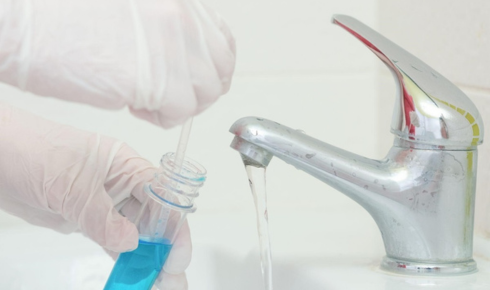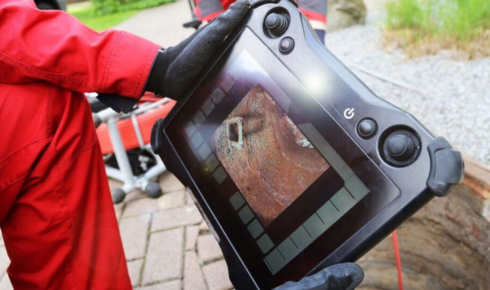If you’ve ever noticed a chalky film on your dishes, dull laundry, or that your shampoo doesn’t lather the way it should, chances are you’ve encountered hard water. It’s one of those invisible household issues that quietly affects daily life — from your plumbing’s lifespan to the brightness of your clothes. But before you rush to buy a fancy water softener, the first step is figuring out what you’re actually dealing with. That’s where hard water testing comes in.
The Subtle Signs That Something’s Off
Most people discover hard water not through science but through frustration — crusty faucets, stubborn soap scum, and water spots on freshly washed glasses. If you’ve caught yourself scrubbing endlessly at your shower walls or replacing a coffee maker way too soon, hard water might be the culprit.
Hard water simply means your water supply has a high concentration of dissolved minerals, mainly calcium and magnesium. It’s not unsafe to drink, but it’s a slow troublemaker — clogging pipes, making soap less effective, and leaving behind residue on everything it touches.
Testing your water can help you understand its mineral content and decide whether you need a filtration or softening system.
The Basics: Why Testing Matters
When you know how hard your water is, you gain control. It’s that simple. Without testing, it’s like trying to fix a leak in the dark — you might guess right, or you might end up wasting money on unnecessary solutions.
For homeowners, renters, or anyone relying on well water, testing is particularly important. Municipal supplies often provide water-quality reports, but those only tell part of the story. The water that leaves the treatment plant might be fine, but by the time it reaches your faucet, it can pick up minerals, rust, and sediments along the way.
So, if you’ve noticed your dishwasher isn’t cleaning properly or your laundry detergent seems weak, it’s probably time to find out exactly how to test for hard water.
How You Can Test Hard Water Yourself
Luckily, you don’t need a chemistry degree or a fancy lab setup to figure out if your water is hard. There are simple methods that give you a surprisingly accurate picture:
- The Soap Bottle Test – Fill a clear bottle halfway with tap water, add a few drops of pure liquid soap (not detergent), and shake it up. If it creates a rich, foamy lather, your water is soft. If not, and you see cloudy water or soap film floating around, that’s hard water doing its thing.
- Test Strips – You can buy affordable water hardness test kits online or at home improvement stores. Dip the strip in water and compare its color to the guide provided. Within seconds, you’ll know how hard your water is on a scale (usually measured in grains per gallon or parts per million).
- Digital Testers – If you’re curious and want more precision, digital water testers are another great option. They measure total dissolved solids (TDS) and provide instant digital readings.
These small tests can give you a clear snapshot of your water quality without needing professional help — though it never hurts to call in the experts for confirmation.
Why It’s Worth Getting a Professional Test
DIY testing gives you a quick overview, but professional testing digs deeper. Certified labs or water specialists analyze not just hardness but also iron levels, chlorine, nitrates, and even potential contaminants like PFAS or lead. That kind of detailed insight helps you choose the right water treatment system for your home, whether that’s a softener, filter, or both.
When professionals conduct how to test water hardness assessments, they use calibrated tools that ensure accurate readings. They can also test multiple water sources around your property — for example, kitchen taps, outdoor spigots, or well lines — to pinpoint inconsistencies in your supply.
What the Numbers Actually Mean
Understanding your results can be confusing if you’re not used to the terminology. Here’s a simple breakdown:
- 0–3 grains per gallon (gpg): Soft water
- 3–7 gpg: Moderately hard
- 7–10 gpg: Hard
- 10+ gpg: Very hard
The higher the number, the more minerals are in your water. In areas with well water or limestone-heavy soil, very hard water is common — and without treatment, it’ll wear down appliances over time.
Dealing With Hard Water Once You’ve Tested
Once you know your water’s hardness, you can make an informed decision. If it’s only mildly hard, you might just install a simple faucet filter or use a descaling agent occasionally. But if it’s higher on the scale, a water softener could be your best investment.
Softening systems work by exchanging calcium and magnesium ions for sodium (or potassium), reducing buildup and making your water easier on skin, hair, and household systems.
You’ll notice the difference almost immediately — cleaner dishes, fluffier laundry, smoother showers, and no more white film on your fixtures.
Everyday Tips to Reduce Hard Water Effects
Even if you’re not ready to install a full system, a few lifestyle tweaks can help:
- Clean your fixtures with vinegar once a week to dissolve mineral residue.
- Use detergent designed for hard water (they foam better).
- Run an empty cycle with vinegar through dishwashers and washing machines monthly.
- Check your water heater regularly; hard water shortens its life significantly.
A bit of care can go a long way in preventing mineral buildup from turning into expensive repairs.
Wrapping It Up
You can’t always see what’s in your water, but its effects are everywhere — on your skin, your appliances, your dishes. Understanding and managing hard water doesn’t have to be complicated. It starts with awareness, a small test, and the willingness to take better care of your home’s most essential resource.
Testing might feel like a small step, but it’s a smart one. Because once you know what’s in your tap, you can make your water — and everything it touches — a little bit better.



